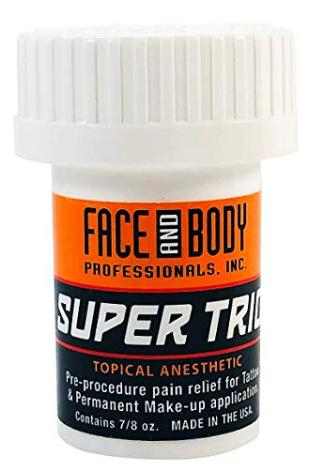Tattoo swelling is a side effect of getting a tattoo. This happens as the area with the ink undergoes healing. Swelling, however, does not occur in all tattoos.
It is not uncommon, though, and should not make you panic. Small tattoos have been known to go through less swelling as compared to large ones on the forearm, neck area, back, thighs, and hands.
Most of the time, this swelling will be the natural healing process of the tattoo. This will, most importantly, not affect how your tattoo looks eventually.
The swelling occurs due to trauma inflicted on your skin as the needles used by the artist penetrate the same skin area continuously. The swelling will be your body’s automatic healing response as it sends white blood cells and other fluids to the wounded area.
The white blood cells begin the wounds healing process from the outside in to protect it against any bacteria. The fluids will make the area tight and swollen as it restricts the movement of the area. This prevents the area from turning and twisting and causing more damage.
Tattoo swelling can be just a small lump under the tattoo or large areas with red bulging lumps on the tattoo.
Why is my tattoo swollen?
There are several reasons as to why your tattoo could be swollen, including:
Location
Where is your tattoo located? Some areas are prone to swelling more than others. They include areas like the feet and the ankles. Areas below the waist, such as the thighs and legs, get bruised and swollen more than other areas.
This is because gravity tends to force blood to pool closer to the ground. The fluids that cause the swelling have little chance of spreading upwards or away from the swollen site.
The forearm and hands are prone to surface contact. This leaves the tattoo prone to constant touch and irritation.
Other body parts prone to swelling are those with thin layers of skin. These areas are delicate as compared to other parts that have thick skin. The needle, during the tattooing process, will penetrate the more sensitive layers of skin, prompting the body to react with a huge and bigger healing response. This will cause more bruising and swelling.
The artist’s technique
How good is your artist at what he does? Did you check out his previous work before having yours done? Some artists are heavy-handed or rough when tattooing. This damages your skin even more than normal, which leads to swelling and bruising.
When choosing a tattoo artist, it’s best to go with referrals. They can tell you how gentle or rough an artist is. Choose one that is gentle since they will cause less damage to the skin.
Medication
If you are under blood-thinning medication, then the chances are that you will bleed heavily throughout the session and for some time after that. This bleeding of the veins at a higher rate than normal will be represented as swelling and bruising.
Aspirin is another medication that increases one’s chance of swelling and bruising. Aspirin and similar medications prevent blood from clotting normally. More blood leaks and builds up at the pockets that are beneath the skin. This will appear as swelling and bruising.
Do not consume blood thinners, including alcohol and coffee, either during, before, or after getting the tattoo.
Infections
On rare occasions, tattoo swelling indicates an infection. If the swelling is due to infection, then it will be accompanied by other symptoms, including rashes, redness, skin that feels hot when touched, and soreness.
Skin sensitivity
If you have blood conditions or for certain medical reasons, are susceptible to bruising and swelling, then expect a higher rate of swelling than normal.
Skin numbing creams
Using skin numbing creams will restrict how blood flows. This can sometimes result in an overly sensitive nervous system, which will increase swelling and restrict the body from repairing the area.
We highly recommend Topical Pre-Procedure Anesthetic Tattoo Numbing Cream (Check price on Amazon)
Old tattoo swelling years later
Another reason for tattoo swelling years later could be using harsh cleaning products or lotions on the area. The skin around the old tattoo will be more sensitive than other areas, and this could cause swelling if roughly handled or if the skin reacts to artificial scents and colorings in the products.
Sometimes, exposing the tattooed area to too much sun will affect the skin leading to heat rash, which is usually accompanied by swelling.
Get the tattoo checked up by a medical professional if you suspect swelling.
Home remedies to reduce swelling
In most cases, the swelling will go away on its own since it’s part of the healing process. However, there are some home remedies you can try out to make the swelling go down faster.
Cold compresses
Ice compresses restrict blood and fluid flow to the injured area. This prevents blood from pooling around the swollen site. It also alleviates pain, reduces inflammation, and speeds up healing.
As you compress the area, be gentle and don’t compress directly onto the skin. You can instead use a wet towel to wrap the ice and then compress it on the skin. Remember that the tattoo will be very sensitive at this point, so use a clean towel and compress the area gently.
You can also use a pack of frozen peas wrapped in a clean towel. Leave the compress on for about 30 minutes.
Elevate the area with the tattoo
If the swollen tattoo is below your waist, raise the area above your heart as you sit or lay down.
Elevating the area helps the fluids and blood to flow to the surrounding areas instead of remaining at the wound site. Try and keep the area raised for at least the first 24 hours, if possible.
Rest after getting the tattoo
The body will have a hard time healing itself if you cannot relax the tattooed area.
Try and keep it relaxed for the first 24 hours and avoid exercising the part straight away.
This will increase swelling since exercising will make the heart pump harder than normal and make blood flush out through the tiny holes created by the needle on the veins.
Relaxing will give your body a better chance at healing efficiently and quickly.
Avoid taking blood thinners
Do not take blood thinners after getting a tattoo. Go for ibuprofen or Panadol and use them as instructed on the packaging.
If on blood-thinning medication, consult your doctor before getting the tattoo.
Increase blood circulation 48 hours later
48 Hours after you get your tattoo, apply a warm compress to increase blood circulation.
Do this for 10 to 15 minutes for at least four times a day. Use a clean cloth and wash your tattoo after the compress. This will prevent infections that could be caused by bacteria or any foreign objects.
Avoid tight clothes
Tight clothes around the tattooed area will increase the swelling due to friction.
Keep the tattoo clean
Keep the area clean to avoid infections that can cause swelling.
Stay hydrated
Drink lots of water to increase the circulation of blood.


